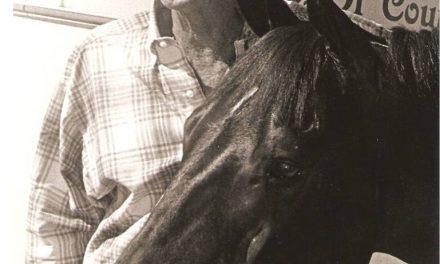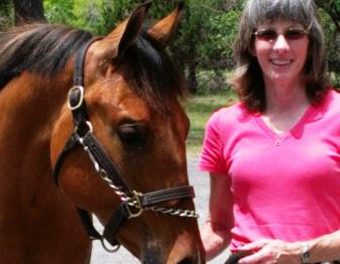THE WAY OF HORSES

Yes! Then acorns are one porcine delicacy he should avoid.
Acorns are seeds or nuts produced by oak trees. There are more than 60 varieties of oaks in the continental United States. The bark, leaves and acorns contain an acidic chemical commonly known as tannin.
Tannin has a bitter taste and is an astringent (contracts tissues and draws out fluids). It can damage the liver and kidneys of horses. Tannin also interferes with the utilization of protein.
All plants contain some level of tannin. Oaks contain high levels. Within the family of oaks, red or black oak varieties contain the most tannin; white oak varieties contain the least. Buds and early spring leaves have a higher concentration of tannin than mature leaves. Green acorns have a higher concentration than ripe acorns.
Live Oak Acorns
Squirrels, birds and deer eat acorns with no apparent problems. These free roaming species search out the less bitter tasting acorn varieties (less bitter means a lower tannin level). Stored and ripe acorns that have been soaked due to rain will also be lower in tannin. Tannin is water soluble and leaches out. It is important to note these animals have access to other foods which will help buffer and dilute the tannin.
Poisoning due to the ingestion of acorns is rare in horses which have access to plenty of good quality forage. An occasional acorn throughout the day should not harm a healthy horse with a digestive system full of long-stem fiber.
The ingestion of buds and spring leaves should be avoided. Make sure low hanging or broken branches are removed before they can be eaten. Providing plenty of forage will help deter horses from eating these forbidden windfalls.
Occasionally a horse will develop a taste for acorns. Such an individual would rather eat acorns than good quality forage. If your horse is one of these fanatics you will have to remove the horse from the pasture which contains the forbidden nut.
The signs of acorn poisoning can be: loss of appetite, excessive salivation and blood in the urine or manure, colic-like pain, slow or irregular heart-rate, elevated temperature, pale mucous membranes, watery eyes and a depressed attitude. In the early stages manure is hard and dark in color; the horse may be constipated. Often, in the later stage, the manure changes to diarrhea. Mouth ulcers may form; salvia may escape from the nose. In extreme cases liver and kidney failure ensues and other organs begin to hemorrhage. Some poisoned horses may develop laminitis.
In addition to the toxins created by the tannin in the acorns, there may be toxins released into the horse’s system due to the sudden introduction of a “new feed”.
When the balanced microbial population in the large intestine is disrupted by the sudden introduction of different feeds laminitis often results. Large numbers of beneficial bacteria die and poisonous endotoxins are released into the bloodstream. Blood flow to the hoof is restricted and the connective tissue (the laminae) between the hoof wall and coffin bone begins to die. If the inflammation is prolonged the coffin bone will rotate downward. The rotation of the coffin bone results in a condition called founder.
Horses that are extremely sensitive to tannin or have eaten large quantities of oak leaves, bark or acorns may die.
If your horse develops acorn poisoning there is no antidote. The common treatment is supportive care. The affected horse must be removed from the source of the poisoning. Your veterinarian will probably give intravenous fluids to help flush out the toxins. Mineral oil and charcoal may be given to help rid the digestive system of the tannin. Hay and water is made available, which also helps dilute the poisonous material in the digestive system. Your veterinarian may also give pain killers to help make your horse more comfortable.
The best thing for the health of your horses and trees is to protect them from each other. Horses are hard on trees. They disturb the root system, chew the bark when bored and rub the branches. Forests or woods do not make good pasture. Fence off any trees. If the trees are providing shelter or shade erect a horse-safe structure, such as a three-sided loafing shed.
There is nothing more beautiful than a majestic oak tree and a horse – they just shouldn’t be in the same picture.
* You can get a Bachelor of Science degree in equine studies or certification as a Professional Horse Trainer or Riding Instructor online. Visit www.horsecoursesonline.com for information.





